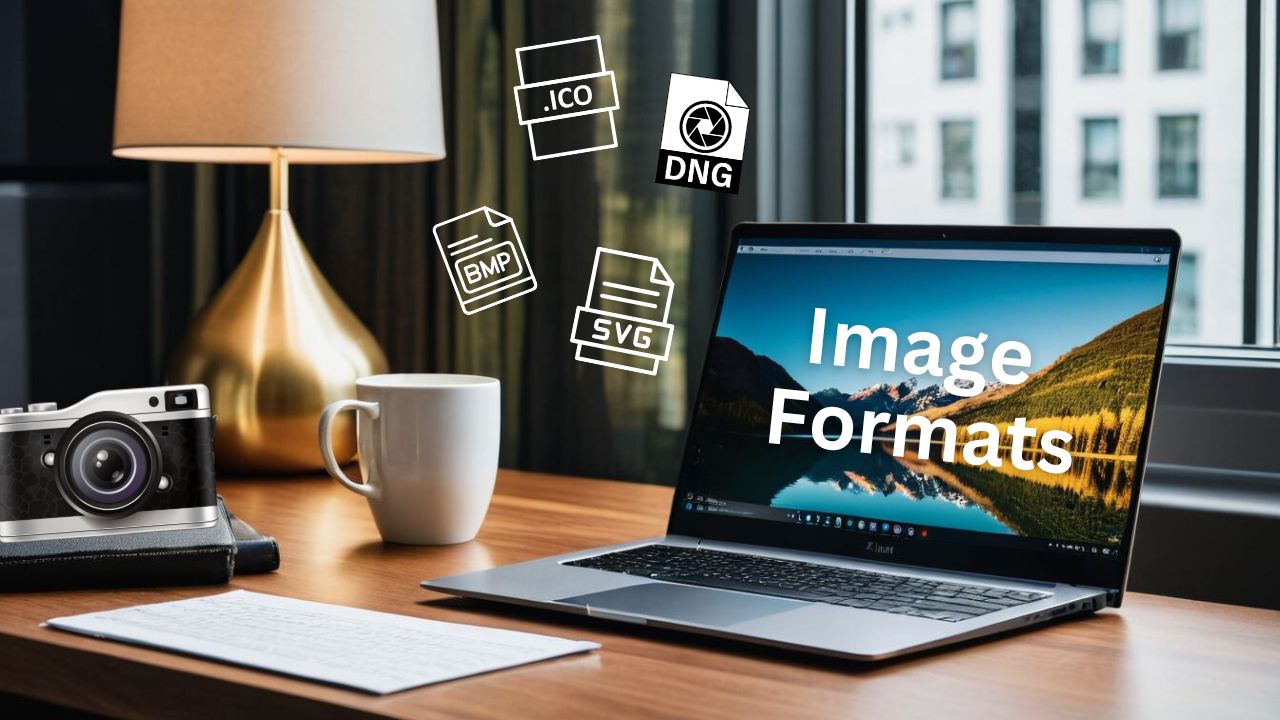If you have ever been perplexed by the myriad of image file formats floating around, you’re not alone. We often encounter the usual suspects – JPEG, PNG, and GIF – but what about the lesser-known ones?
Let’s dive into these quirky image formats that might have slipped under your radar.
JPG-large and PNG-large
Ever stumbled upon file extensions like JPG-large and PNG-large?
As it turns out, these were made up file extensions employed solely by Twitter. Used for designating images of higher resolutions, these extensions, in reality, hold no discernible difference from regular JPG or PNG files.
JNG
JNG, or JPEG Network Graphics, could be another head-scratcher if you are unfamiliar.
Essentially, it cleverly combines the structure of PNG with the JPEG compression algorithm. JNG allows the embedding of a second image that functions as a transparency mask, a feat not achievable with a regular JPEG.
JPEG variations
JPEG 2000
JPEG 2000 stands as a feature-rich image format surpassing its predecessor. Despite widespread support from various image software, its limited compatibility with Chrome and Firefox restricts its usage.
Offering enhanced features such as transparency, multiple color channels, higher bit depth, tiling, and region of interest, JPEG 2000 optimizes memory usage during encoding and decoding processes. The region of interest feature allows the inclusion of metadata for specific image areas, enabling customized compression qualities tailored to individual sections of the image.
JPEG-XT
JPEG-XT emphasizes backward compatibility, enabling it to support additional features that regular JPEG does not. Despite potential benefits, it lacks extensive support from existing software. However, it can still be utilized independently to leverage its advanced capabilities, ensuring that basic 8-bit viewing remains accessible to all recipients.
JPEG-XL
Now, let’s shift our attention to the newest star on the horizon – JPEG-XL (.jxl). This format offers a rich tapestry of features, including tiling, region of interest, HDR, and even animation support.
While Chrome and Firefox offer limited support, Safari, Adobe Raw, and Photoshop embrace its potential, fostering its emergence as a promising replacement for traditional JPEG.
BMP – Bitmap
Bitmap, often recognized as .bmp, employs a simple encoding method involving an uncompressed 2D pixel array with assigned colors. Unlike PNG and JPEG, it lacks sophisticated compression techniques, making it a straightforward list of pixels, their colors, resolution, and basic metadata.
It supports indexed color, limiting it to 8 bits overall or the equivalent of 256 colors, a process that selects the most common 256 colors within an image and refers to them instead of labeling each pixel with three color channel information.
AVIF
In the quest for the perfect image format, contenders like AVIF step into the ring.
AVIF, short for AV1 Image File Format, is derived from the AV1 video codec, which is known for its excellent compression capabilities. Although there is a considerable effort to establish AVIF as a standard, its maximum image resolution, constrained by its video codec origins, poses a limitation, making it less likely to entirely replace JPEG, especially for images exceeding its resolution limit.
The future will determine whether AVIF can eventually supersede JPEG or if both formats will coexist.
SVG
SVG, the scalable vector graphics format, revolutionizes the way we perceive image data.
Unlike raster images, SVG stores information as shapes rather than pixels, allowing for infinite scalability without the fear of pixelation. This format finds its niche in graphic design and logo creation, promising smooth scalability without loss of quality.
ICO/CUR
The ICO/CUR format, known as the icon and cursor file format, acts as a container for multiple images of varying sizes.
Used predominantly for Windows icons and cursors, it supports various image types such as bitmap or PNG, ranging from 1×1 pixels up to 256×256 pixels. While Microsoft suggests a maximum of 256 pixels, some instances might feature larger images, although they are rare.
If your preferred image editor lacks the capability to export to an ICO file, consider utilizing an online ICO image converter. This straightforward tool allows you to easily convert any image to ICO format. You can adjust the image size and configure other settings as needed.
DNG
The DNG format, or Digital Negative, is a photographer’s favorite for storing the utmost original camera quality. Acting as a universal raw format, DNG captures unprocessed data directly from the camera sensor, offering more information than uncompressed formats like TIFF.
Using a Bayer filter, cameras capture color information differently from monitors, relying on de-mosaicing to reconstruct full-color details. While raw formats preserve the original data, other formats lose some information during conversion, emphasizing the significance of capturing images in raw format from the outset.
In Conclusion: Image Formats
The world of image file formats is a diverse landscape, offering an array of options to cater to every need. While the JPEG has long reigned as the king of image formats, the emergence of new contenders signals an exciting era of possibilities.

